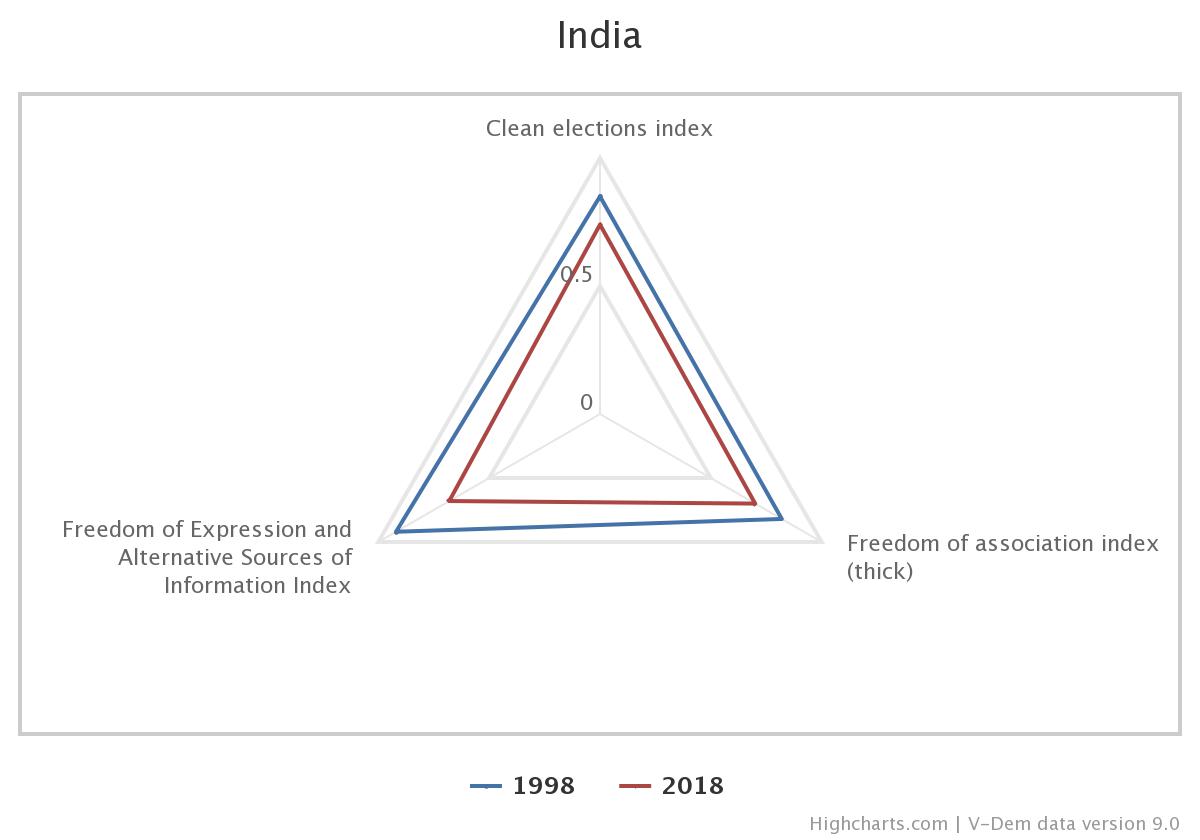Democratic Backsliding in India, the World’s Largest Democracy
By: Lydia Finzel
Feb 24, 2020
Whereas democracy in other South Asian countries such as Sri Lanka, Bhutan, and Nepal has improved in recent years, India’s performance is declining. This week’s graph reveals the extent to which democratic backsliding threatens freedom of expression and association for the 1.35 billion people living in the world’s largest democracy.
At end of 2019, India’s prime minister Narendra Modi tightened his Hindu-national agenda by introducing a new Citizenship Amendment Act that fast-tracks citizenship for individuals from Afghanistan, Bangladesh, and Pakistan, so long as they are non-Muslim. In response to mass protests, prime minister Modi’s crack down freedom of expression has been compared to tactics taken by Indira Gandhi’s regime during the 1975-77 state of emergency.
The V-Dem country radar chart reveals the extent of the decline in democratic freedoms over the past two decades. Here we plot three core components of electoral democracy - clean elections, freedom of association, and freedom of expression. Higher values on these indices reflect higher levels of democratic freedoms.
The graph illustrates that all three core components of democracy declined between 2000 and 2018. While in 2000, India scored fairly high on freedom of expression and alternative sources of information, this component of democracy has seen the most significant declines in recent years. This reflects the regime’s tactics to stifle critics in the media and academia.
To learn more about V-Dem’s indicators and graphing tools, visit the analysis section under v-dem.net.


